
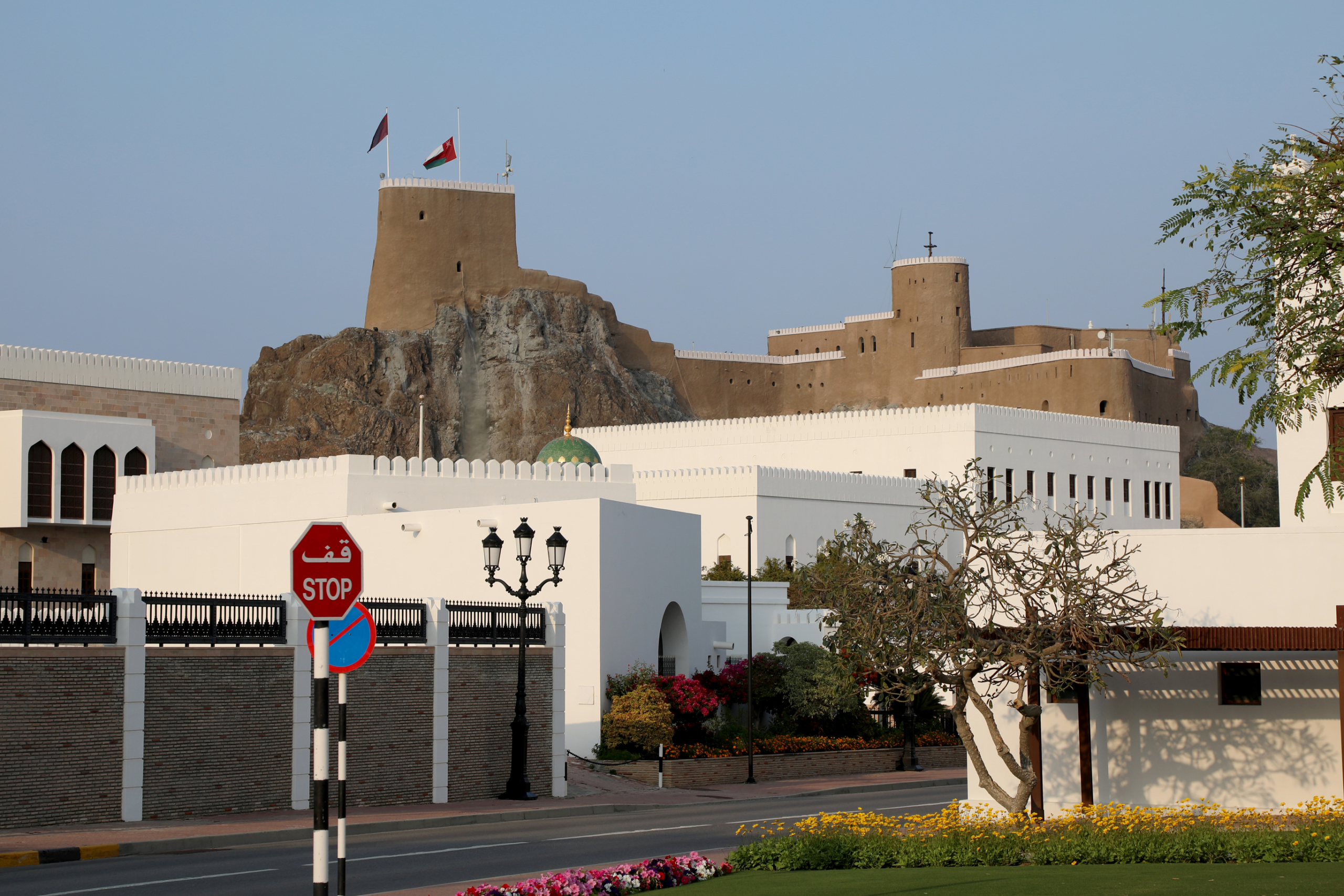
Exploring Al Mirani Fort Muscat: A Journey Through Oman’s Rich History
Al Mirani Fort Muscat stands proudly on rocky heights that overlook the Gulf of Oman. This magnificent structure has protected Oman’s capital for over 400 years. We found that there was an architectural marvel during our exploration of Muscat’s historic harbor. Its imposing walls narrate stories of Portuguese colonization, Omani resistance, and maritime supremacy.
The fort symbolizes more than just a military stronghold – it provides evidence of Oman’s rich cultural heritage and strategic importance. Our team took a closer look at its history and uncovered fascinating details about its military engineering. The Islamic-Portuguese architectural fusion and its vital role in defending Muscat’s harbor among its twin fortress, Al Jalali, make it unique.
This piece guides you through the fort’s centuries-old experience. You’ll learn about its origins, architectural significance, and modern-day restoration. The military features, best photography spots, and practical visiting information will help you appreciate this historic landmark better.
Historical Evolution Through Centuries
Let’s explore deeply into Al Mirani Fort’s chronicles and experience a fascinating trip through time that spans several centuries.
Origins and Early Construction
The fort’s origins date back to the pre-Portuguese era. It stood as a simpler defensive structure that guarded Muscat’s harbor. Today’s elaborate structure started as a basic fortification that showed the strategic thinking of early Omani builders. They knew the value of this rocky structure promontory’s position above the sea.
Portuguese Colonial Period
The fort went through its most important transformation in 1587 under Portuguese viceroy Duarte de Meneses. Evidence shows their extensive rebuilding efforts added cannon platforms, a commander’s residence, and sophisticated storage facilities. The Portuguese made Al Mirani Fort their main defensive stronghold. They brought revolutionary military technology – this became Oman’s first fortress to employ cannons.
The fort faced several Ottoman challenges during this time:
- The 1546 original raid on Muscat
- The 1551 major assault attempt
- The 1581 final Ottoman offensive
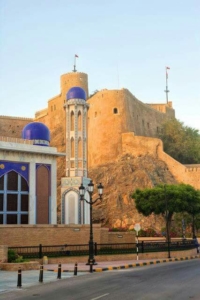
Role in Omani Independence
A dramatic change in Al Mirani Fort’s history took place during the mid-17th century. A clever strategy led to the Portuguese defeat. A Portuguese commander fell in love with a Hindu merchant’s daughter. The merchant refused the marriage due to religious differences thus facing threats of ruin. He created an ingenious plan where he presumably agreed and spent a whole year pretending to prepare for the wedding while he actually gradually removed the fort’s gunpowder and grain supplies.
By 1649, the fort stood defenseless. The merchant signaled Imam Sultan Bin Saif, who took back the fortress. This soaring win ended Portuguese control over Muscat and changed Omani maritime history forever. This mix of romance, strategy, and military tactics shaped Oman’s destiny.
The fort’s freedom became a symbol of Omani strength and independence. It changed from a colonial stronghold to a proud symbol of Omani sovereignty. The walls still echo this remarkable change that helped Oman become the oldest independent state in the Arab world.
Architectural Marvels and Design
Al Mirani Fort’s design shows an amazing blend of form and function. The fort sits proudly on a 30-40-meter-high rocky mass, and its architecture naturally merges with the surroundings. This creates an imposing presence that has withstood time.
Military Engineering Features
The fort’s design works perfectly with the terrain. Its walls wind around the mountain at different levels and create strategic platforms for command buildings. Manuel Homem de Pina’s advanced engineering in 1633 made the fort even stronger. He raised walls along the ridge and built new guardhouses to boost defensive capabilities.
Defensive Structures and Cannons
The fort’s defensive features show remarkable military breakthroughs. Our exploration revealed:
- Four strategic towers that provide maximum protection
- Walls at irregular heights for tactical advantage
- Multiple observation platforms that blend naturally between rooms
- Specialized chambers for military operations
- Strategic positions for cannon placement
Al Mirani Fort played a groundbreaking role in Omani military history as the country’s first fortress to use cannon technology. Portuguese forces boosted this capability in 1610. They built a sea-level stronghold at Mirani Rock’s base with a revolutionary low-level cannon battery.
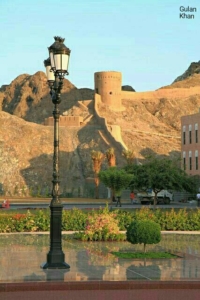
Islamic-Portuguese Fusion Elements
The unique architectural elements combine Portuguese military engineering with Islamic design beautifully. A small round domed chapel still standing today shows this fusion perfectly. The gateway features a double round arch and small columns with rope motifs. The entrance arch uses imported Portuguese limestone and represents one of Asia’s rare Manueline details.
The designers showed great environmental awareness. Windows face north to catch cooling breezes, while thick walls naturally insulate against Muscat’s intense heat. The fort becomes a lit masterpiece at night when floodlights highlight its architectural excellence.
Several levels connect through steep staircases and tunnels. This creates an intricate network that served both defensive and practical needs. These architectural elements prove the sophisticated engineering capabilities of their time. Al Mirani Fort stands as more than a military stronghold – it’s a marvel of 16th-century defensive architecture.
Strategic Significance
Our research revealed that Al Mirani Fort became the lifeblood of Muscat’s defense system. This fortress’s influence goes way beyond the reach and influence of its impressive architecture. It played a vital part in shaping Oman’s maritime history.
Harbor Defense System
The Fort’s location was chosen with great care to build an impenetrable harbor defense. The commanding height gave us a clear understanding of why it made a perfect vantage point to watch incoming vessels. The fort’s defensive features included:
- A sophisticated low-level cannon battery installed in 1610
- Multiple observation platforms overlooking the harbor
- Strategic positioning to block small ships from landing
- A specialized cuirass (defensive structure) built at sea level
The fort’s name comes from the Portuguese word ‘Almirante’ (Admiral), which shows its significant role in maritime defense. Guards could spot threats early before they came close to Muscat’s harbor.
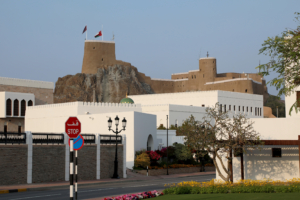
Military Importance Through Ages
The fort’s military history revealed its pioneering status as Oman’s first fortress to employ cannon technology. This advancement proved vital during several Ottoman sieges, especially when Ottoman forces brought artillery to the ridge above the fort in 1552.
The fort reached its peak military importance during the 16th century. It faced multiple Ottoman attacks. Each assault led to boosted fortifications, and major improvements were completed by 1588 under Portuguese command. These ongoing changes turned Al Mirani Fort into an almost unconquerable stronghold.
Connection with Al Jalali Fort
The brilliant twin-fort defense system of Al Mirani and Al Jalali caught our attention. These fortresses created an imposing gateway to Muscat’s harbor, with additional support from the Muttrah fort to the west. This strategic setup created a crossfire zone that made it very hard for enemy ships to approach.
Both forts worked together perfectly. Al Mirani focused on harbor defense while Al Jalali watched over the surrounding waters. This dual-fort system worked so well that it became the foundation of Muscat’s maritime defense for centuries. It protected vital trade routes and helped establish Oman’s dominance in regional maritime affairs.
Modern Restoration Project
Al Mirani Fort, the ancient guardian of Muscat’s harbor, has gone through an amazing revival thanks to an ambitious restoration project. The Ministry of Heritage and Tourism brought this historic landmark back to life while keeping its authentic character intact.
Conservation Efforts
The sophisticated restoration techniques used to preserve this 600-year-old fortress left us amazed. The conservation team put several measures in place:
- 200 sensors as part of advanced monitoring systems
- Pressure grouting to stabilize rocks
- Support work for the 30-40-meter-high rock foundation
- Special treatments to combat salt damage
The restoration team’s ability to blend modern engineering solutions with the fort’s historical character stood out. Each stone and wall received meticulous attention to keep the fortress’s original grandeur alive.
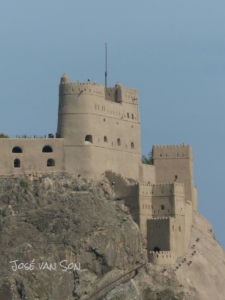
New Visitor Facilities
2023 marked a new chapter when the Ministry of Heritage and Tourism joined forces with Hajar Mountains Resorts and Hotels Company. Their partnership turned Al Mirani Fort into a lively cultural center without losing its historical value.
Modern amenities now boost the visitor experience while staying true to the fort’s character. Exhibition spaces showcase local artisan’s work beautifully. At night, strategic lighting creates a magical atmosphere that highlights the fort’s architectural beauty against the dark sky.
Preservation Challenges
The preservation team faces complex hurdles daily. Salt weathering from the coastal location demands innovative conservation solutions. The team works hard to balance visitor access with protecting delicate structures.
The management team must meet Oman Vision 2040 goals while keeping the fort’s authenticity. They’ve created environmentally responsible tourism practices that help local communities through jobs and cultural promotion. This approach ensures the fort will stand proud for generations to come.
Visitor Experience Today
We visited Al Mirani Fort and found that there was an exciting new chapter in its storied history. The fort opened its doors to the public in April 2024, and we were among the first visitors to see this beautifully restored fortress.
Exhibition Highlights
The fort’s restored chambers blend history and contemporary art beautifully. New exhibition spaces showcase rotating collections from both Omani and international artists. Eight historic cannons, unearthed during renovation, now stand as centerpieces in the military history exhibition.
Some spaces remain empty by design to keep the fort’s authentic atmosphere. Art installations complement the historical architecture thoughtfully. The exhibitions create a natural dialog between past and present that brings new life to these ancient walls.
Photography Spots
The fort offers several amazing spots that capture its true essence. Here are the most impressive views we came across:
- The harbor viewpoint from the upper ramparts
- The architectural details of Islamic-Portuguese fusion
- The panoramic vista of Al Alam Palace
- The dramatic interplay of light and shadow in the fort’s corridors
The golden hour just before sunset creates the most captivating light that casts a warm glow over the ancient stonework. Morning light works great too, with fewer visitors and clearer skies to capture the fort’s imposing structure against Muscat’s dramatic landscape.
Practical Visit Information
Here’s everything you need to know to plan your visit:
Opening Hours: The fort welcomes visitors daily Best Visiting Times: Early morning or late afternoon Facilities Available:
- Modern elevators to help you move around
- Clean restroom facilities
- Parking adjacent to the fort
Comfortable shoes are a must since you’ll walk on uneven terrain. Water bottles are essential during summer months, and morning visits help you avoid the intense afternoon heat.
You’ll need 1-2 hours to see everything properly. Modern lifts make the site available to visitors with mobility challenges, though some areas still have steps to navigate.
The fort’s position gives photographers spectacular shots at sunrise and sunset. The viewing platform near the cannons lets you capture amazing shots of the fort, palace, and harbor together.
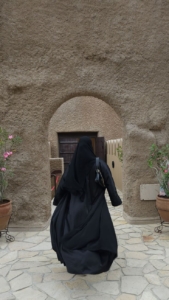
Conclusion
Al Mirani Fort represents much more than a military stronghold. Our visit revealed a masterful fusion of Oman’s rich heritage with its modern cultural aspirations. This 400-year-old fortress has evolved remarkably from its origins as a Portuguese stronghold into a proud symbol of Omani independence and architectural brilliance.
A new chapter in the fort’s history began with its transformation into a vibrant public cultural space. The historic landmark now welcomes everyone thanks to modern amenities and meticulous restoration work that preserves its authentic character. Visitors can experience breathtaking views, deep historical connections, and expertly curated exhibitions that create lasting memories.
Ancient corridors and mighty ramparts of the fort let us feel centuries of history beneath our feet. The fort’s remarkable journey from its strategic military significance to its architectural excellence continues to engage visitors worldwide. This magnificent fortress demonstrates how historical monuments can inspire future generations through careful preservation and thoughtful modernization. Your passport to timeless experiences awaits. Let’s begin Book Now!
